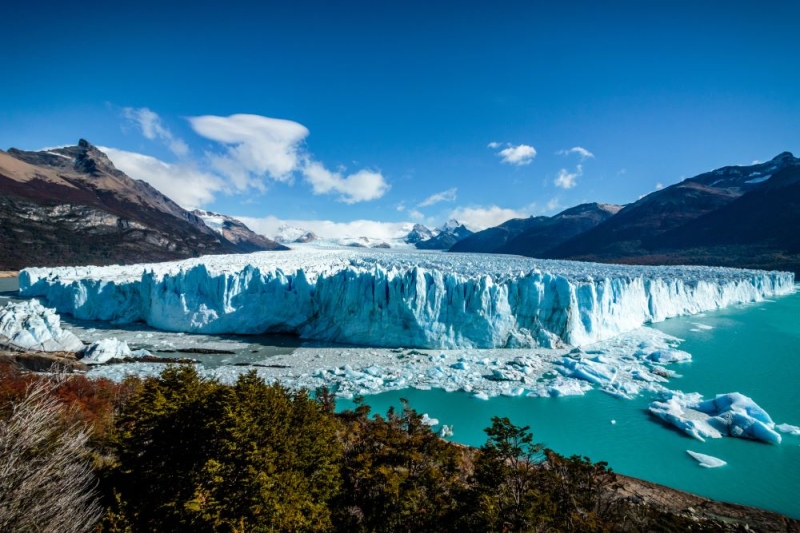
Argentina is a country of incredible landscapes and many climatic zones. This is the ruggedly beautiful Patagonia in the south, the powerful Iguazu Falls in the northeast, the bright, lively Buenos Aires, the sunny grape-growing Mendoza and the lunar Ischigualasto Valley. We tell you which places you should definitely visit in Argentina on your next vacation.
How to get there
You can fly to the Argentine capital, Buenos Aires, with transfers. The cost of a round-trip flight starts from 69,000 rubles* per person. A visa to Argentina is not required, but if you choose tickets with a connection to the USA, you will also need an American transit visa. Entry rules under COVID-19 conditions can be found here.
How to move
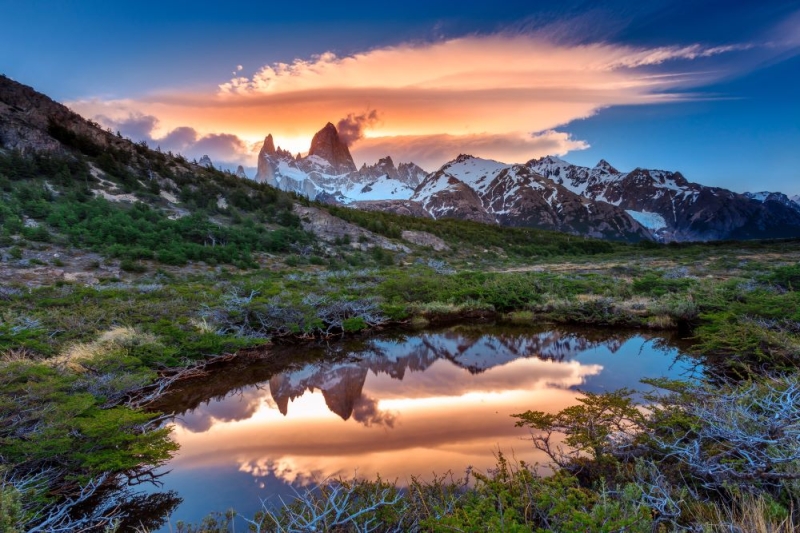
The distances in Argentina are enormous. You can travel between cities by ground transport (buses or trains), It’s better to fly to remote parts of the country (for example, Patagonia or Iguazu Falls) by plane – this way you can save a day or more. Renting a car in Buenos Aires will cost from 8100 rubles* per day.
What to see in Argentina
Buenos Aires
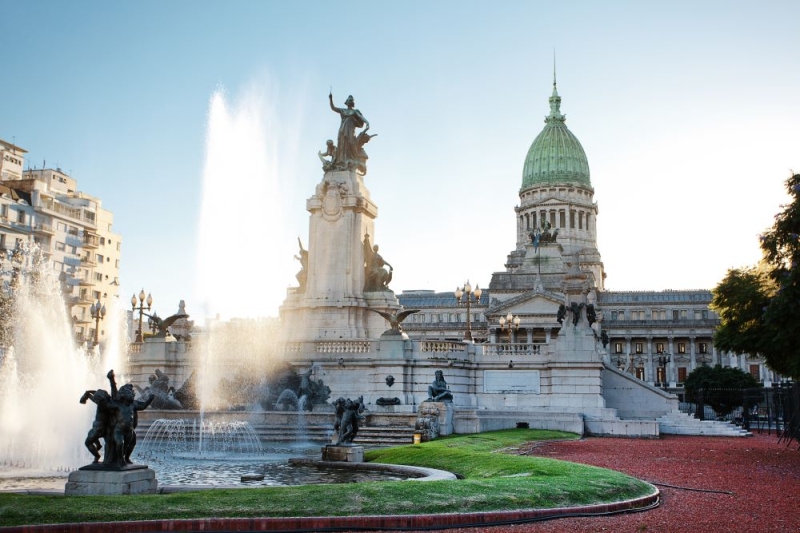
Elegant but always bustling, Buenos Aires embodies the very essence of Argentina: in every quarter of the city someone is either dancing, singing or painting. Its compact green center, where neat high-rise buildings alternate with 19th-century buildings, is reminiscent of secluded corners of Paris, and each quarter has its own character and charm.
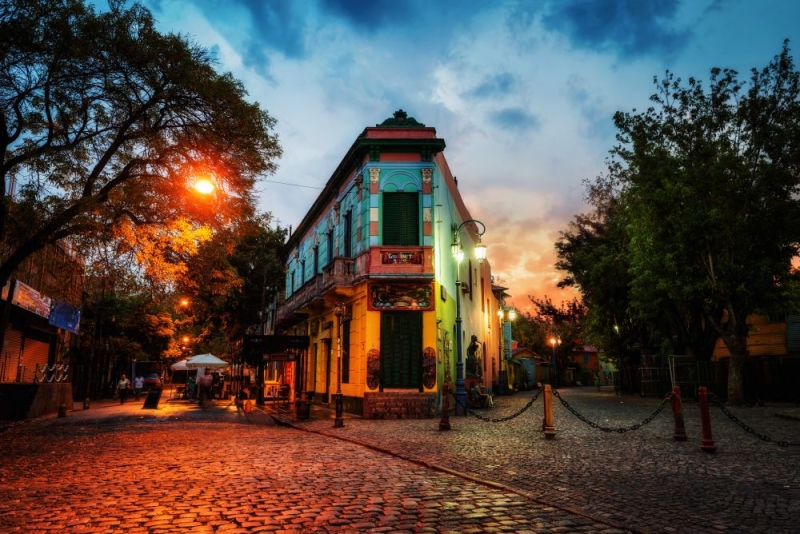
In the vibrant port quarter of La Boca, you can watch tango dancers and street artists. At the Recoleta cemetery, which looks like a mini-city, you can look at the mausoleums where Argentine celebrities are buried. In the fashionable office district of Puerto Madero, converted buildings house upscale steakhouses, where it is worth trying the main Argentine dish, asado (charcoal-roasted meat). Behind this block begins the Costanera Sur ecological reserve – a place for secluded walks and relaxation from the bustle of the city. And people come to the fashionable district of Palermo to sit in the best restaurants, bars and shopping.
You can get around the city by metro, buses, metrobus or taxi. Pay conveniently with a refillable Sube card.
Where to stay in Buenos Aires
Circus Hostel – from 900 rubles* per night per person;
Hotel Frossard – from 1300 rubles* per night per person;
Sarmiento Palace Hotel – from 2900 rubles* per night per person.
Cordova
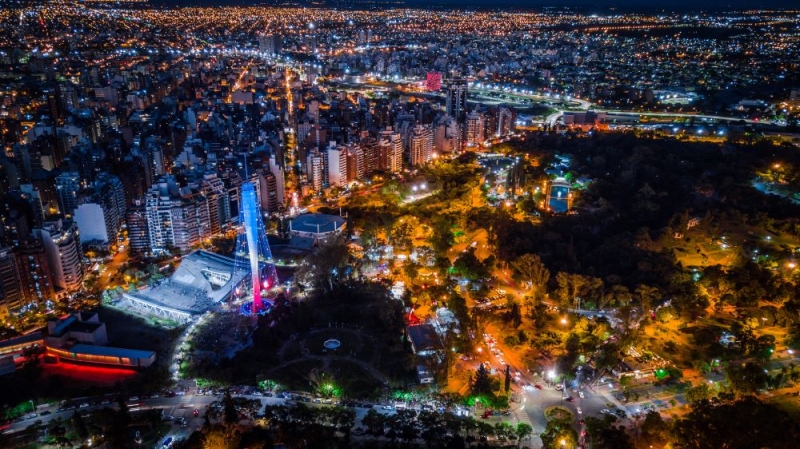
This trendy Argentine metropolis with Spanish colonial architecture is often overlooked. But if you want to enjoy the nightlife and cultural life, then Cordoba is worth putting on your list. It is home to the country’s oldest universities, several UNESCO World Heritage Sites and contemporary art galleries.
During the day, admire the Jesuit heritage by walking through the Jesuit quarter. Visit the Evita Fine Arts Museum and Sarmiento Park, and in Nueva Cordoba, check out the bars and clubs that party all night. You can also climb the mystical Mount Uritorko, where ritual ceremonies were held and, according to rumors, UFOs were observed.
Where to stay in Cordoba
HA! Hostel y Residencia – from 1300 rubles* per night per person;
NH Córdoba Urbano – from 3800 rubles* per night per person;
Kube Apartments Express – from 2900 rubles* per night per person
Iguazu Falls
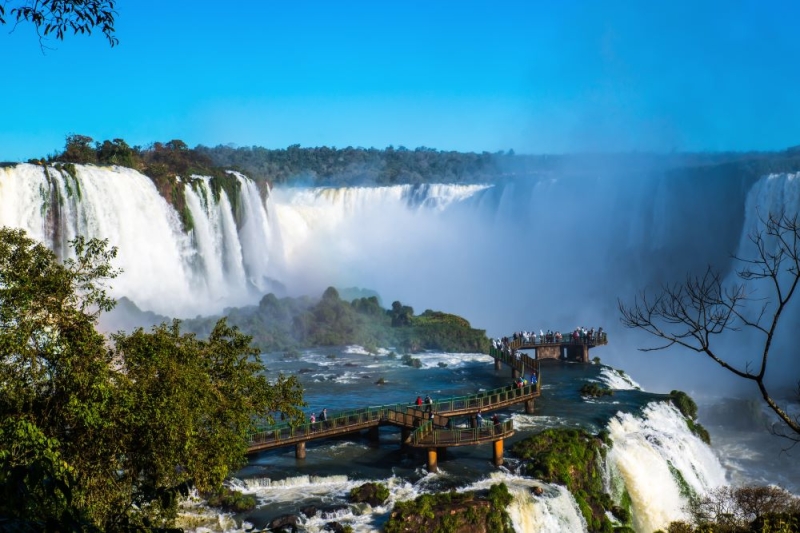
To admire the Argentine part of the famous giant Iguazu Falls, you need to get to the city of Puerto Iguazu. We recommend that you fly here, as already upon landing a truly breathtaking view opens up.
Entrance ticket to Iguazu National Park costs 2000 rubles*. There are several viewing platforms where you can see the waterfalls from all sides. Thrill-seekers ride a speed boat directly under the falling water. In addition, the waterfalls are surrounded by picturesque jungles, through which hiking routes are laid – spend a whole day walking around the park.
Where to stay in Puerto Iguazu
Posada Los Tajibos – from 2200 rubles* per night per person;
Hostel Iguazu Falls – from 1100 rubles* per night per person;
Jasy Hotel – from 4000 rubles* per night per person.
Mendoza region
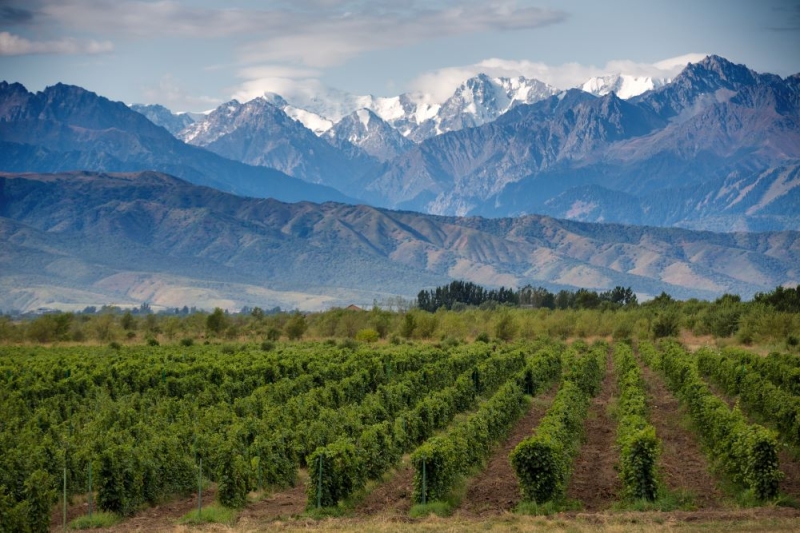
The Mendoza region is the cradle of Argentine winemaking; the country’s best vineyards are located here. This is a mecca for all Malbec lovers. Come to the eponymous city of Mendoza, it is located between two vineyard valleys, Valle de Uco and Lujan de Cuyo, and go on a tour of the surrounding wineries and city wineries. You can even do this by bicycle, rentals are available in the city.
Mendoza was also chosen by gauchos – Argentine cowboys. Many people here have ranches, to which they invite tourists and organize horseback riding and traditional dinners for them.
Where to stay in Mendoza
Mora International Hostel – from 1100 rubles* per night per person;
Bari – from 2100 rubles per night per person;
Apartamentos Mendoza – from 6300 rubles per night per person.
Los Glaciares National Park
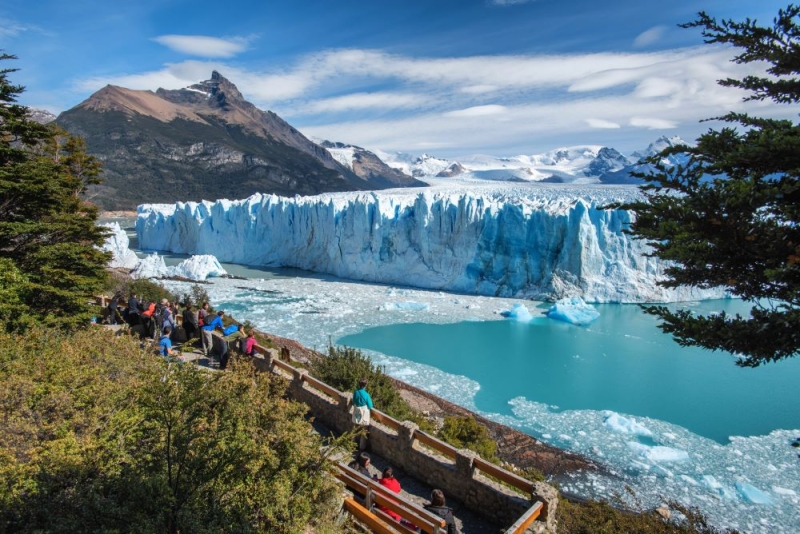
Los Glaciares National Park in the southern Andes attracts nature and trekking lovers. This is the territory of Southern Patagonia and is home to the enormous Perito Moreno glacier (the third largest fresh water reserve on the planet), Argentina’s largest freshwater lake, Lago Argentino, as well as the Fitzroy mountain range.
To see the main attractions of the park, you need to plan overnight stays in the city of El Calafate and the town of El Chalten. It is better to fly into El Calafate. This is the “gateway to the Argentine glaciers”, from here you can go trekking or take a boat trip to Perito Moreno. You can look at the glacier for free from observation platforms, and for a fee you can go on a boat excursion or climb right onto it. Then you can take a rented car or bus along the scenic road to El Chaltén, where routes to the rest of the park begin.
Where to stay
El Calafate
America Del Sur Calafate Hostel – from 2600 rubles* per night per person;
Bla Guest House – from 1100 rubles* per night per person;
Hotel Picos Del Sur — from 5100 rubles* per night per person.
El Chalten
Hosteria Don Atilio – from 2200 rubles* per night per person;
Hostería Punta Sur en Lago del Desierto – from 3200 rubles* per night per person;
Inlandsis – from 5700 rubles* per night per person.
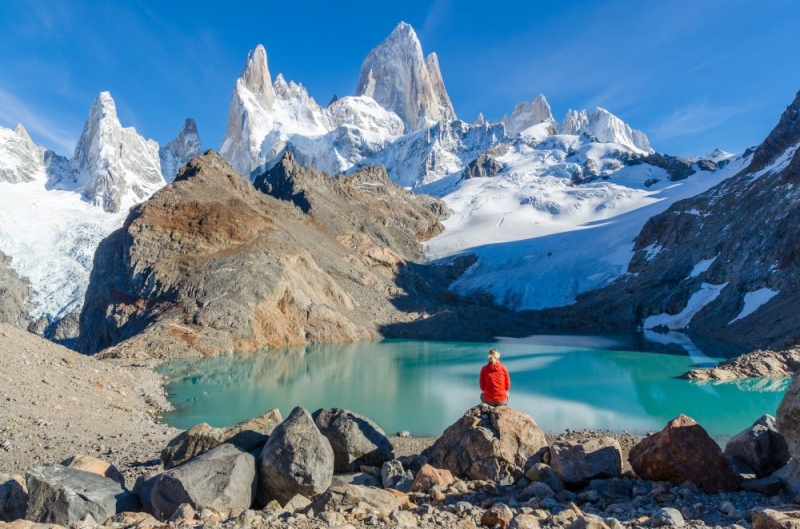
Ushuaia
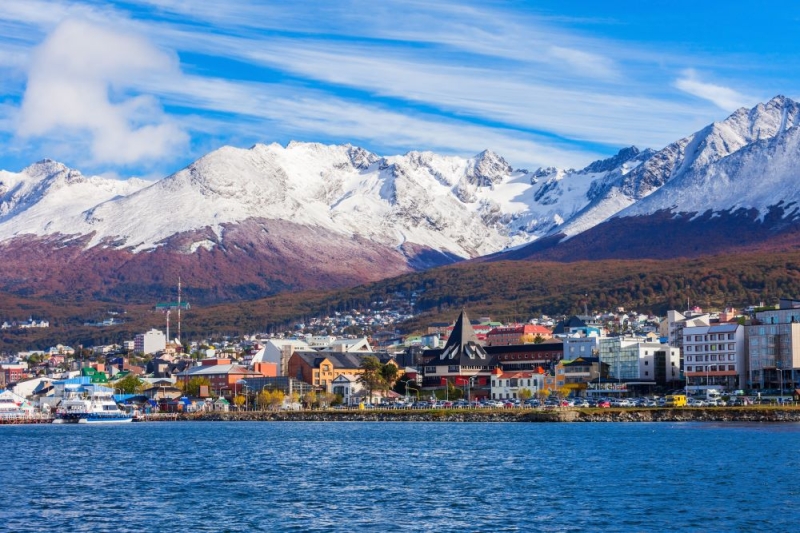
Rugged Ushuaia on the Tierra del Fuego archipelago on the shores of the Beagle Channel was a missionary stronghold, a penal colony, and a naval base. Now it is known as the “Edge of the World” and the “Gateway to Antarctica” – cruises to the southernmost continent and tours to the Tierra del Fuego park start from here.
Of the attractions in the city itself there are several museums, including a prison museum. Tourists also go on excursions to Martillo Island, where colonies of Magellanic penguins live (from 7,500 rubles*), go on a trek to the Esmeralda Lagoon and on a cruise along the Beagle Channel to the southernmost lighthouse Les Eclaireurs (from 7,000 rubles*).
Regular flights fly to Ushuaia, including from Buenos Aires and El Calafate.
Where to stay
Hotel Austral Ushuaia – from 5800 rubles* per night per person;
Mirador del Beagle Hosteria – from 3400 rubles* per night per person;
YAGHAN HOSTEL — from 2200 rubles* per night per person.
National Park Tierra del Fuego (Terra del Fuego)

Tierra del Fuego National Park is located in southern Argentina, where the Andes Mountains drop abruptly into the icy waters that lead to Antarctica. This is a windy and cold region where Patagonian forests coexist with snow-capped mountains, rivers, waterfalls and glacial lakes.
The national park is so large that it will take two to three days to explore all its corners. The total length of walking routes of varying difficulty is more than 40 km. There are campsites in the park where you can spend the night with your own tent for free.
You can get to the park on your own by car, transfers from hotels in Ushuaia, or with a full-day excursion (from 10,000 rubles*). A daily entrance ticket for foreigners costs 1600 rubles*, on the second day they give a 50% discount.
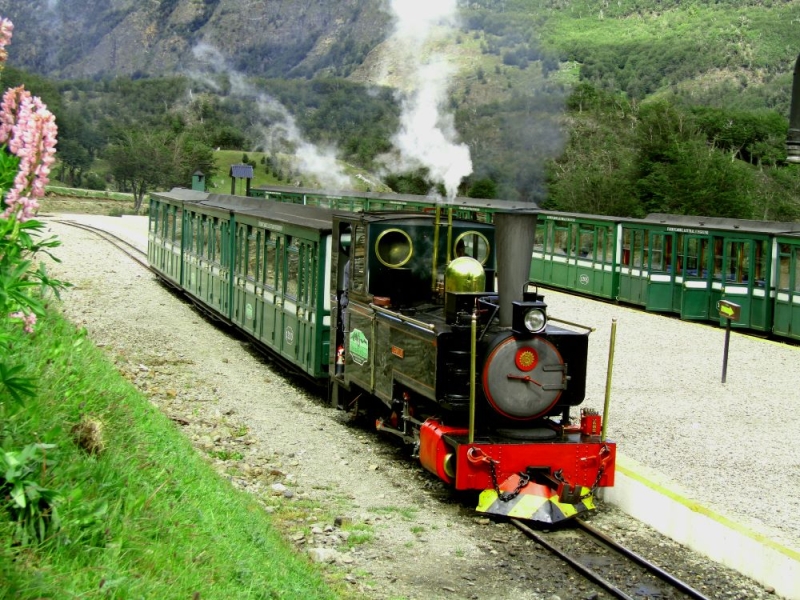
Also, the Tren Fin del Mundo tourist train with a steam locomotive runs through the park on a narrow-gauge railway built by prisoners at the beginning of the 20th century. Ticket – from 3650 rubles*, entrance to the park is not included.
*Prices valid at time of publication

